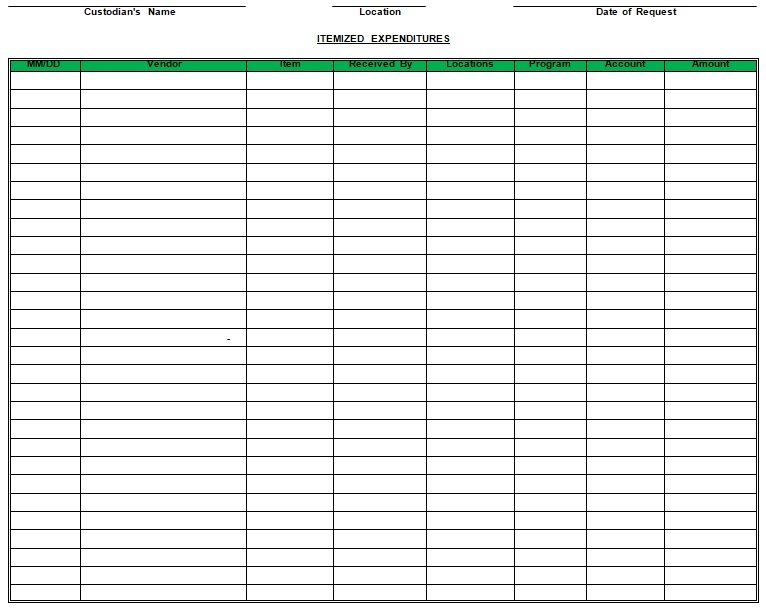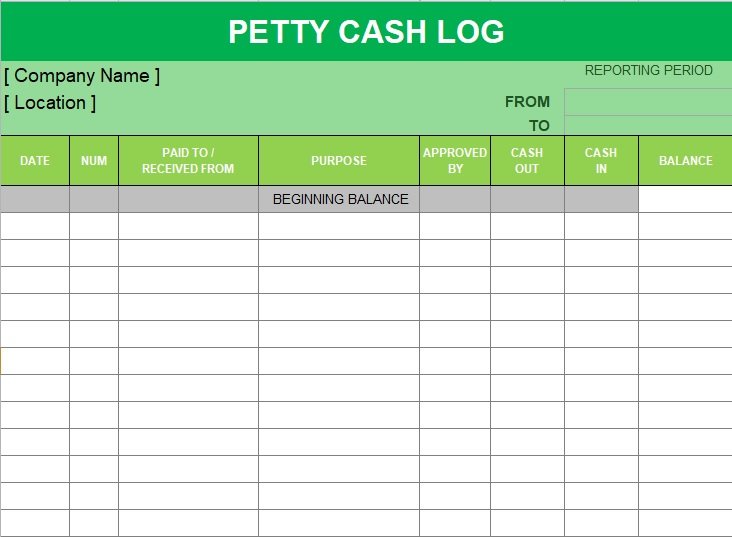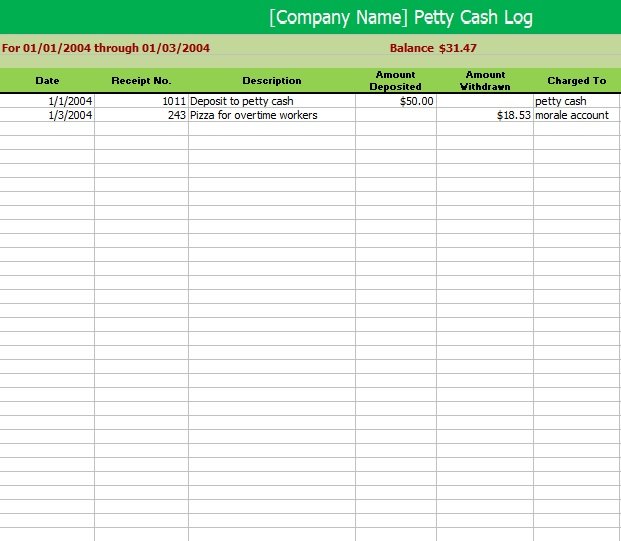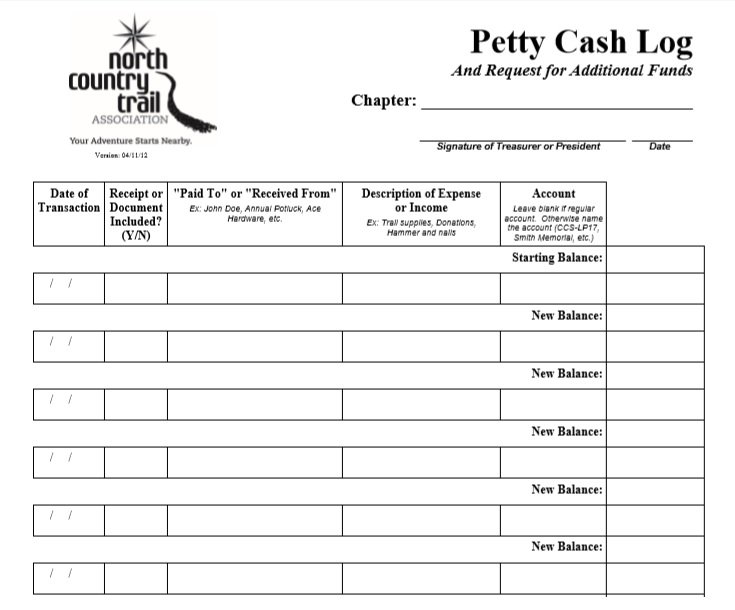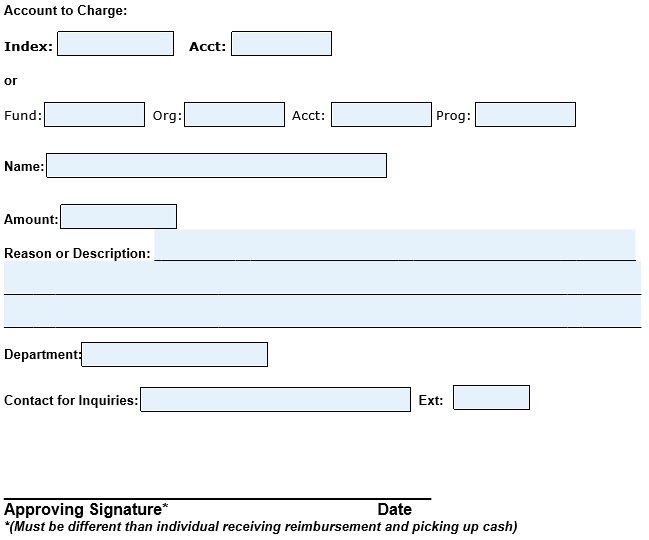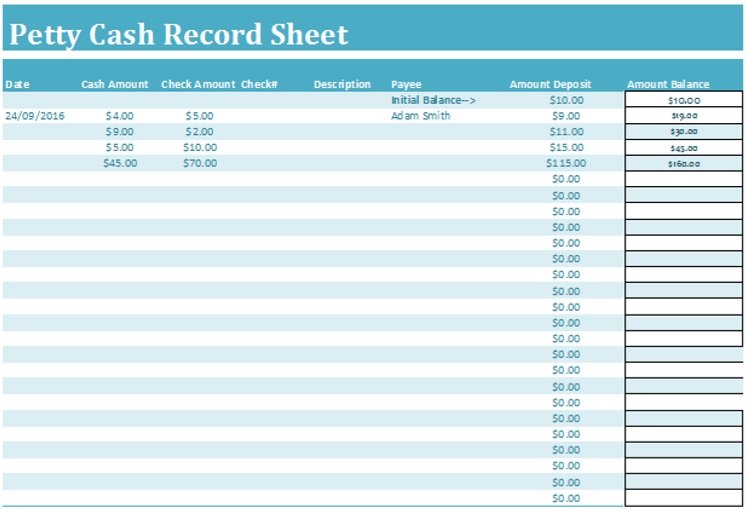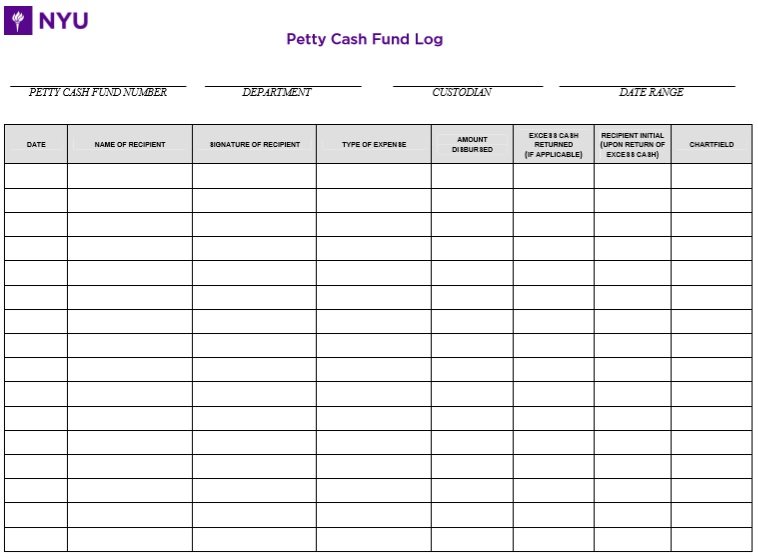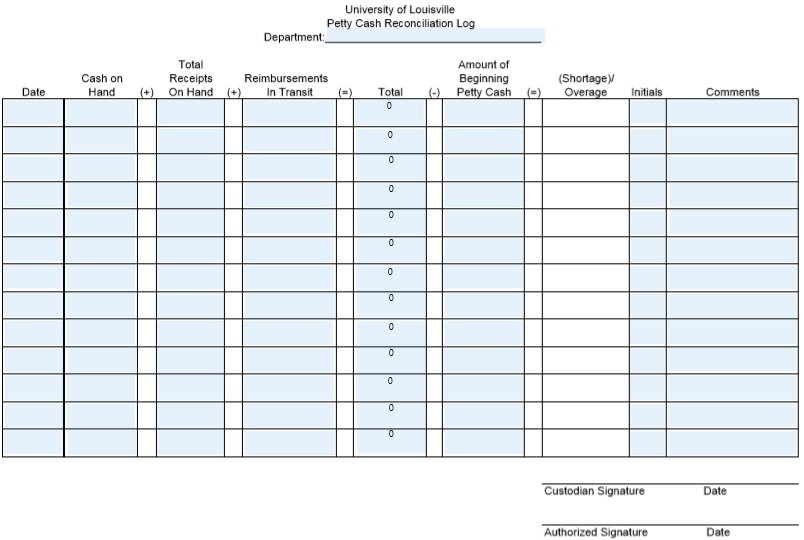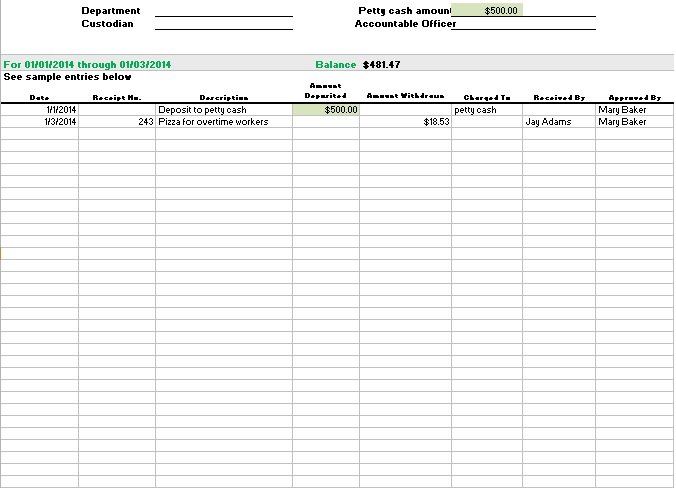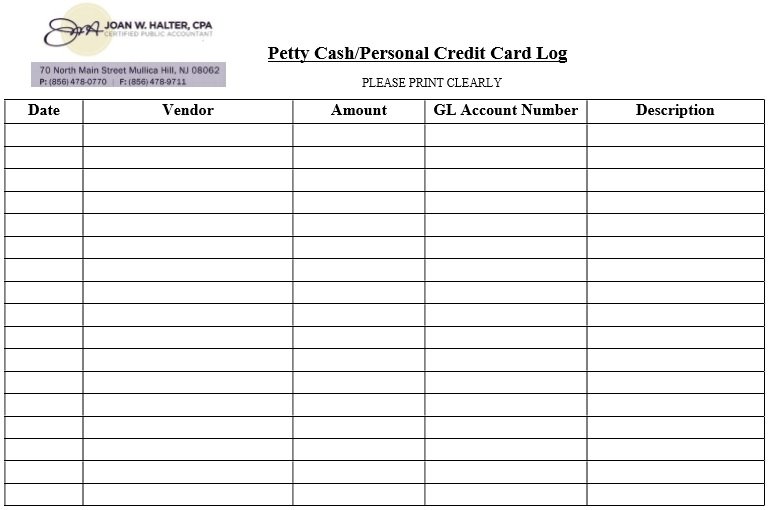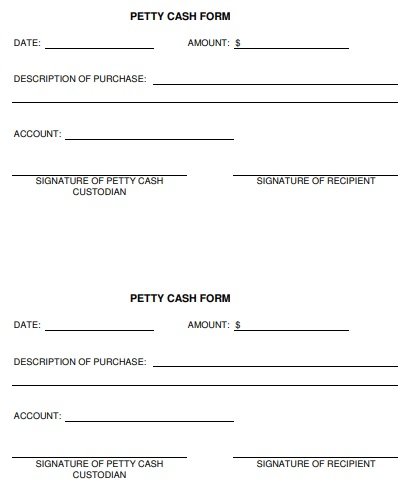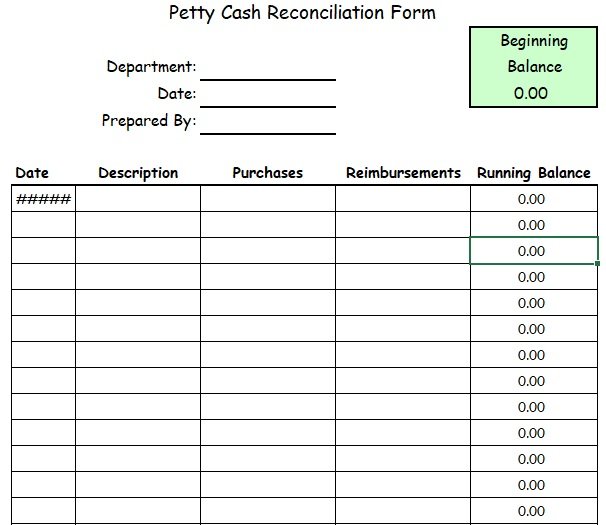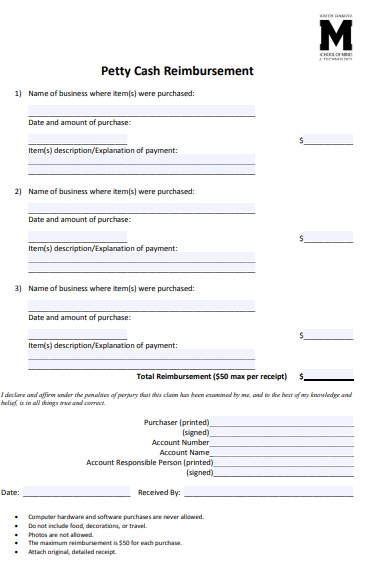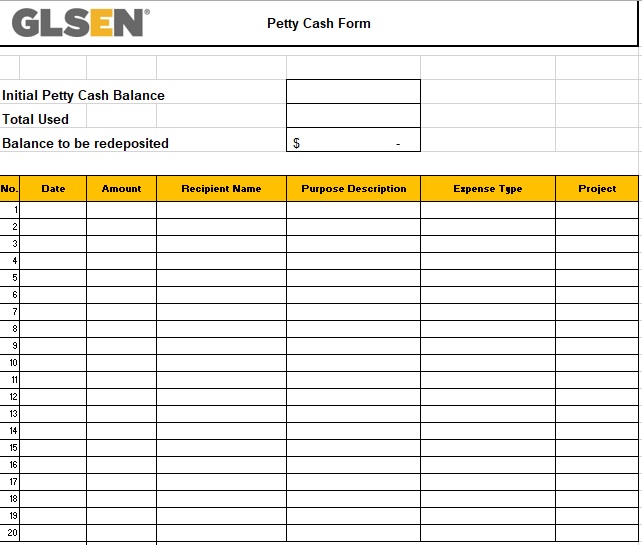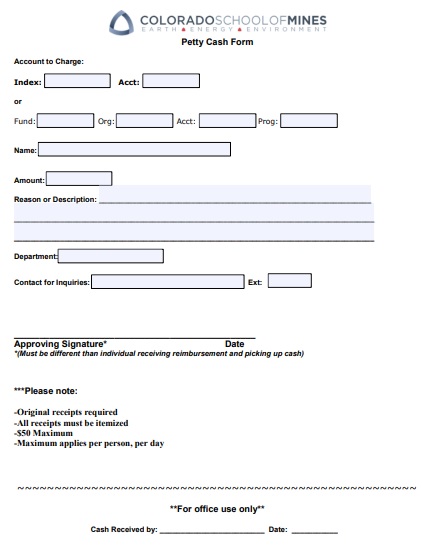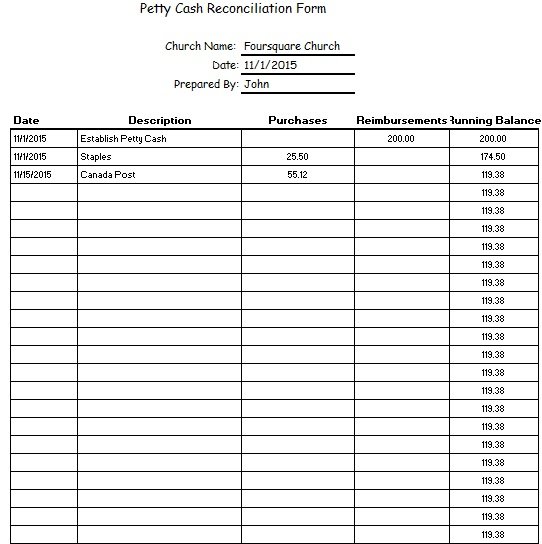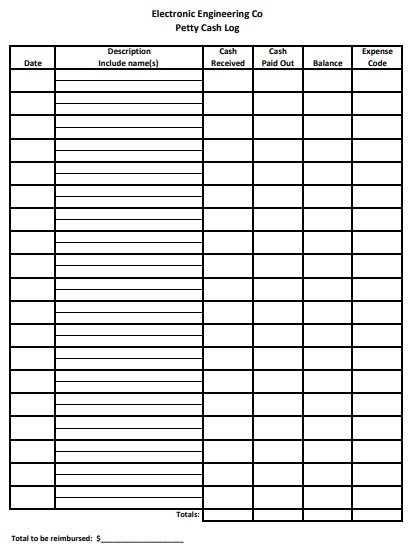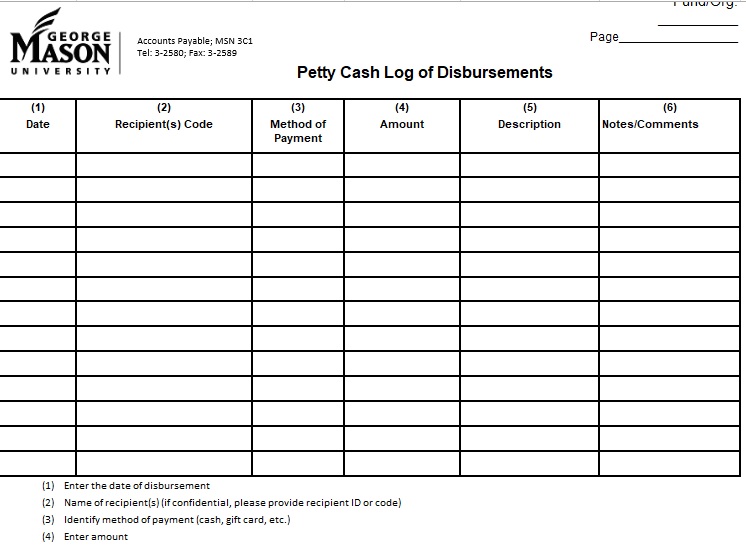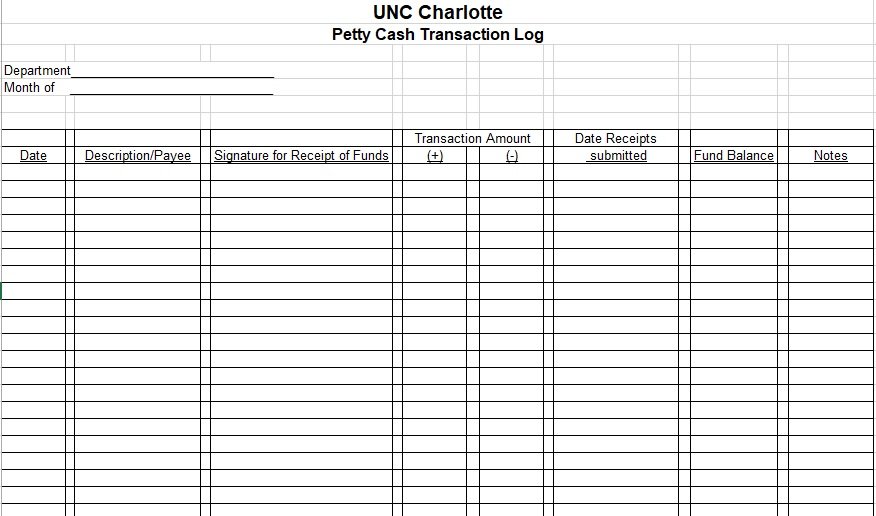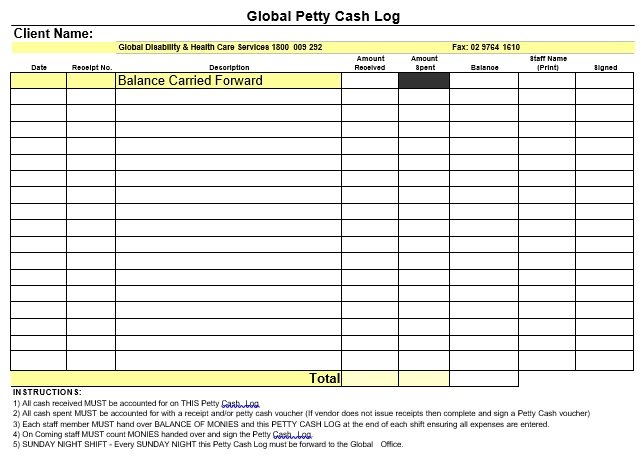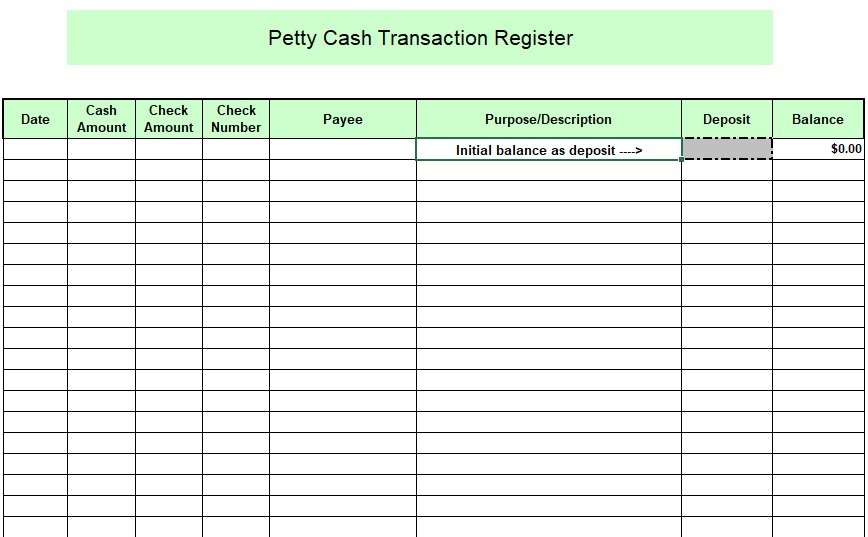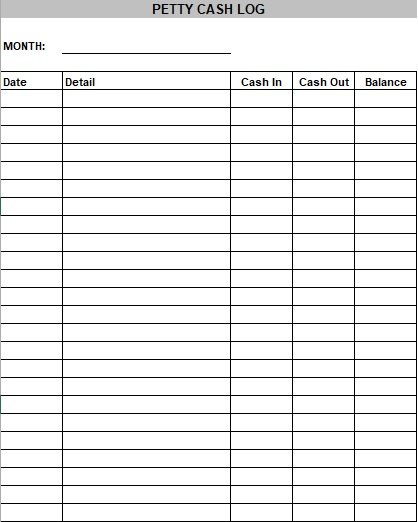A petty cash log template is a useful tool used by employees to record all transactions made with petty cash. A small amount of money that a business or an organization sets aside for minor expenses that need immediate payment is referred to as petty cash.
You need to keep track of petty cash transactions in order to maintain accountability and ensure the proper management of financial resources. With the help of a template, you can maintain a clear and organized record of petty cash expenses. Additionally, the petty cash log should be updated and reviewed regularly for timely replenishment of the petty cash fund.
Here are the common uses of petty cash;
- Office supplies like paper, pens, and printing ink
- Refreshments
- Postage and delivery
- Small equipment and repairs
- Travel expenses
- Employee reimbursements
- Miscellaneous expenses
What is a petty cash log?
Petty cash is a small amount of cash that most businesses can keep on their premises in a locked box. It is used by sellers at markets and fairs. Moreover, it is generally operated on an imprest system. It should be appropriately controlled by a petty cash log. A petty cash log is taped to the envelope or stored with the cash. In this way, whoever removes or adds cash can use the form to record the date, payee, aim, and amount.
Different types of petty cash logs:
Here are the different types of petty cash logs;
Simple
This type of log is the most basic and almost same to a single cash log. For the amount and the date, you’d only have to make columns. On the debit side of the log, the amount which is received from the head cashier is written down. While, on the credit side of the log, the petty payments made by the cashier are written down. Then, you can compute the total funds you have left in your box at the end of the day.
Analytical
In the credit part of your log, you’d have to create a separate column for each of the headings of expenses. Only one column is included in the debit part of your log. This would be the cash received from the cashier. In the log, you should only record small amounts. You’d have to specify if you have this type of log to the person you would put in charge of your funds.
Columnar
This type of petty log would include a lot of columns for amounts of money. Thus, you can track daily expenses. Also, it should contain a credit and debit side. In a column, all the particulars like receipts and expenses are recorded together that you can name as ‘particulars.’ In another column, you would contain dates for debit and credit records.
The amount of money obtained from the head cashier is recorded in the debit side. The credit side would include more columns, as needed. In a classified method, expenses would be recorded and arranged as per the chronological dates of the transactions. To see the entire amount recorded for expenses, a total amount can also be added in the credit side.
Imprest
This type of log is similar to a columnar log that have a lot of columns in the credit side and just one column in the debit side. Also, they have a particular column and a column for the date.
The head cashier would give a fixed amount of cash or funds to the petty cashier in advance while using this kind of system in order to be able to cover any expenditures for a specific period. The petty cashier would have to submit a statement of expenditures incurred to the head cashier when the period is over. Furthermore, it would be essential with this system to note down the total amount of expenditures should not exceed the provided amount by the head cashier.
Custodians are appointed to oversee the petty cash fund with the help of a petty cash sheet. It’s a duty of custodial to dispense funds and ask for replenishment as per rules and regulations set by the company. Petty cash custodians reconcile petty cash funds periodically to verify the balance fund is correct.
When the balance falls to a preset level, the custodian launches a request for replenishment. Custodian provides petty cash log, vouchers, and receipts at the time of replenishment of new funds. Simple petty cash templates used by custodians for keeping records and management of petty cash funds. You may also like the payroll template.
Petty Cash Voucher:
The petty cash custodian keeps a record of each transaction made through the petty cash fund. For this purpose, petty cash vouchers are used to record below information of each payment made,
- Voucher Number
- Payment For
- Date
- Attached Receipt approved by the authority
Another voucher is used with a petty cash form template to request the replenishment of petty cash funds. This voucher carries information such as date, details, float, voucher number, cash in, cash out, and balance.
The significance of having a petty cash log:
Below are the essential reasons that why it would be beneficial to have a petty cash log for your petty expenses;
- Using a petty cash log is a systematic way to maintain documentation of all petty payments and expenses that occur in your business on a regular basis.
- It would give the details required with regards to small transactions which have been made. It is recorded by different people a lot more quickly and easily.
- If you’d like to compare expenses between two time periods, it can act as a reference. It would assist in efficiently controlling your petty expenses.
- It reduces the amount of work of the head cashier in the business. By having this log, the cashier would have more time in the business to manage and control the bigger and more major cash transactions effectively.
- You can make your main cash book a lot more informative by having this kind of log book. It would only contain major transactions. Thus, it would be a lot cleaner, clearer and possibly more explained.
- It assists in keeping track of cash transactions current and up-to-date. This is because the task of actually recording the transactions is distributed, thus made a lot convenient.
- Since payments doesn’t have to be recorded separately so it saves you a lot of time. The posting is made periodically at a certain time, thus, all transactions are written down in real time.
- This type of cash system would also reduce the requirement to write checks for small amounts. This is quite inconvenient. By using cash right then and there, you’d be able to conveniently complete a transaction.
How to handle petty cash?
Here are the tips and tricks for handling petty cash;
Develop a reasonable amount for your fund
You should consider your daily expenses and for your fund, set an amount. In your business, you should cover all small expenses but not too big that the people who work for you can be tempted to steal it. Also, ensure that the amount you set won’t need replenishing too frequently.
Determine where the cash can be used
Your employees may have the tendency to start spending for the office as this fund is readily available but not relevant to your business. It is essential to determine when the cash is to be utilized and demonstrate that if it’s not for those purposes, the cash must not be used. On your cash box, you can stick a list so that your employees won’t forget it as well as they won’t have any reason to spend the money in any other way.
Need your employees to record everything
Your employees might forget to record them or consciously neglect writing them down just because the transactions involved in this system are small, particularly if the amount is insignificant. However, in the long run, this may cause problems for you so stress the significance of recording everything to your employees and ensure they do it.
Don’t provide all your employees access to the funds
The systems of petty cash aren’t for everyone. You should ensure that to include only that people who have been in your business the longest. You can allocate the task to one or two of your employees to make sure that the log is neat.
Don’t leave your funds unsupervised
Such types of funds are very liquid. This indicates that they are very much prone to theft. You should always make sure that your box is locked away whether you have an office full of trusted employees.
How do you keep track of petty cash?
Here are some steps that will help you to keep the track of petty cash;
- At first, buy a lockbox. It is easily available at an office supply store. You should buy a metal box. It will contain the amount of cash that you have available to use. Moreover, you can also store receipts in it.
- Next, assign the responsibility of the lockbox to someone. If you are a single person, then the responsibility of a petty cash fund is yours. If you have a group of people, then you can assign this responsibility to any individual.
- The next step is to store the petty cash box and set a limit. You have to keep it out of sight and in a closed drawer. But it can be easily accessible. The thing you should to do is to keep this box in a locked drawer for another layer of protection.
- When you have all done with the basics, it’s time to stick money into the petty cash box. Make sure that you are putting enough in to handle most cash purchases while establishing the funds.
- After that, make a transaction log. You begin a log of the transactions that go through the box. It can be either a simple handwritten accounting log or an online spreadsheet. Furthermore, you can also download a pre-made template to save time.
- Now, the thing you have to do is to track the petty cash fund on the accounting records of your business.
- After completing a list of transactions, make sure that a receipt is present for every purchase. It will surely help you to keep the balance sheet in order.
How to maintain a petty cash log?
Consider the following steps to effectively maintain a petty cash log;
Keep track of cash withdrawals and deposits
The most important element that constitutes maintaining a petty cash log is keeping track of cash withdrawals and deposits. You must list down on your petty cash log every penny that leaves your cash box to successfully keep an account of your money.
In case, you forget to record this then at the end of the month, you may find yourself with a couple of dollars of deficit. As a custodian of the petty cash account, if this happens to you then you have two options either to admit your mistake in front of your boss or replenish the deficit from your own pocket. Thus, you must keep a receipt for every transaction for accounting purposes.
Complete the petty cash log
State in your petty cash logs any transactions that have occurred and are connected to the petty cash. It’s up to you whether to update your log every week or after every transaction so that you don’t forget any detail. Also, it becomes easier for you to match up both documents at the end of every period.
Ensure that your petty cash is counted
There must be a serious computation that has to happen at least every month. It includes the remaining money in your cash box and all transactions mentioned in your cash log. Make sure both numbers should match the amount that was placed in the box.
Top up your petty cash
Many people get confused about the amount of their petty cash float. So, you must top up your petty cash.
Frequently Asked Questions (FAQ)
An imprest petty cash system is a procedure of accounting for petty cash expenses. Under this system, the petty cash fund always remains at a fixed amount decided on when the fund is first established. This system allows only the replenishment of the spending made.
There are the following uses of petty cash;
1- It is used to buy small items such as tea, coffee, sugar, and stationery.
2- Used to provide change to customers who are paying cash.
3- The cash that has been paid by customers is kept in it. There is no to deposit it in the bank account. However, the large amounts should be deposited in the bank.

